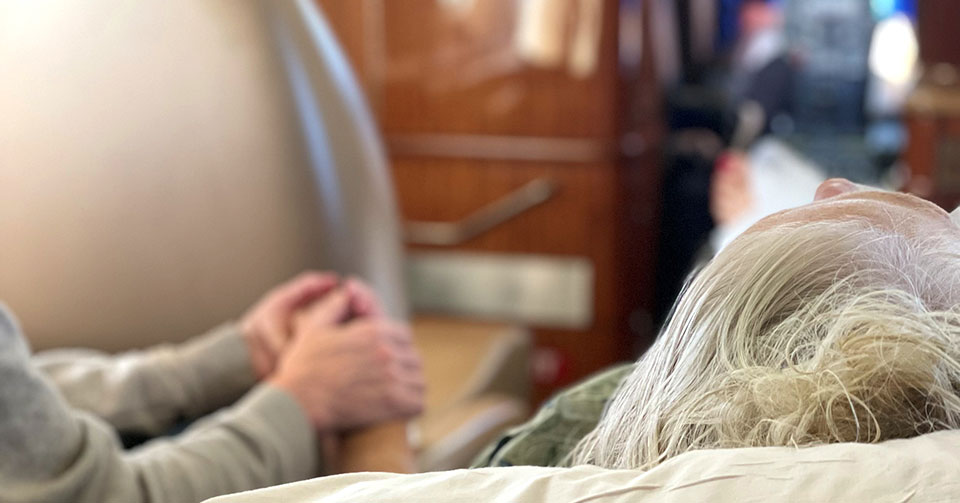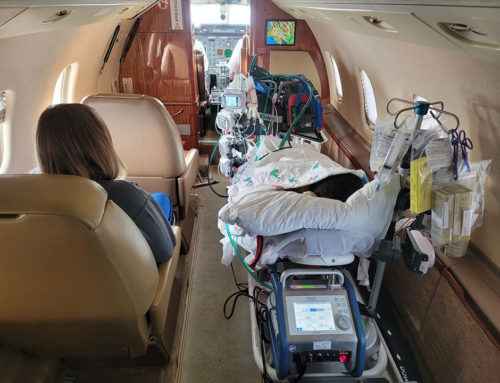Caring for and assisting hospice patients during their end-of-life medical journey is a challenging yet fulfilling job. Amongst many things, ultimately it is important to support hospice patients by fulfilling their wants and needs to ensure they are comfortable in their last days. This article will help illustrate just how special this patient population is, and how respect and compassion should be the main priority when rendering medical aid.
Starting with my first experience with a hospice patient, this story resonates in my mind as clear as day. I remember every single step of it, not because it was an awesome save filled with adrenaline pumping action, but because on this particular day I learned the biggest lesson about hospice patients that changed how I interact with every hospice patient to this day.
To paint the scene, I’m a 20-year-old brand new Paramedic turned loose on the 911 streets and highways of Nebraska hailed to do no harm and save lives. I’m equipped with an entire ALS (advanced life support) ambulance full of everything that I need to render my care. I feel as if I’m on top of the world. The tones go off for a 70-year-old female cancer patient on hospice, complaining of severe nausea and vomiting. Oncology is ordering medical transport for further hospital stabilization. I hop in the passenger seat of my ambulance and run through what I’m going to do for her. My plan, arrive on scene, take her vitals, start her iv, give her 500ml of normal saline along with 4mg of Zofran and just like that she will be great for transport. I’ll package her up and we will arrive at the hospital better than ever. Upon meeting her she greets me with “Honey, I know what you think you are going to do, you are going to try and start an IV and give me 4mg of Zofran and a fluid bolus”. My eyes become wide as she continues with “I’m used to receiving 20mg of Zofran and that still doesn’t help, you can’t give me fluids even though you think I need it, there is no possible way you will get an peripheral IV on me, I have a port they will access it at the hospital, your SP02 machine won’t read my oxygen level, and my blood pressure is so low you won’t get one”. I was astounded, I didn’t know what to do or say. I tried to act like I knew what I was doing but the truth was I knew absolutely nothing about hospice care. She went on to say, “Honey I’m dying and just need you to get me to the hospital so they can make me comfortable.” I delivered this kind woman to the hospital with no IV, no vital signs, and no medication given for her nausea. I had simply followed her exact directions which entailed carrying her out of the home, keeping her warm, and driving her to the hospital. After that call I assumed I had failed miserably. The fact is hospice care is different. What is hospice care? How does it differ? And lastly what does hospice care look like in the long-range transport environment?
The American Cancer Society Defines hospice care as a special kind of care that focuses on the quality of life for people and their caregivers who are experiencing an advanced, life-limiting illness. Hospice care provides compassionate care for people in the last phases of incurable disease so that they may live as fully and comfortably as possible. They go on to say that the hospice philosophy accepts death as the final stage of life: it affirms life but does not try to hasten or postpone death. Hospice care treats the person and symptoms of the disease, rather than treating the disease itself. A team of professionals work together to manage symptoms so that a person’s last days may be spent with dignity and quality, surrounded by their loved ones.
Hospice care differs from usual patient care as it is extremely family centered. The patients’ loved ones are often involved in all aspects of care, their needs can be just as important as the patient’s and should always be addressed. This can however present some challenges; it is difficult to adhere to a certain set of protocols and procedures with so many people involved. Since the patient and family are making decisions together everyone must get on the same page. A specific care plan should be built for each hospice patient following online medical direction.
Sometimes in hospice care, the wishes of the patient and loved ones is to physically change the location of the patient that can better support all of those involved. Reasons for this might be a patient wants to pass in their hometown or favorite vacation home. Loved ones might want the patient to be closer to where more family is centrally located. Or it may be a family member couldn’t meet their needs and the patient must be moved to another family member who can better assist. To achieve these wishes, hospice patients can utilize an air ambulance for a long-range transport (also known as medevac or medical flight).
Hospice air transports make up a large patient demographic at AirCARE1. During our transports we try to accommodate every patient and family request. Sometimes the request is to take multiple family members or a fur buddy on the aircraft with us. Other times it’s administering medications and doses that are different from our usual standard method. These flights involve multiple maneuvers to get the patient comfortable in any way possible. At times they are very close to death and require a large amount of care to continue throughout the flight, including pain management. At AirCARE1, with hospice patients, we provide all our medical care with the goal of getting the patient to their destination and fulfilling all their wishes.
Let’s fast forward 18 years. I’m now a 15-year cancer survivor living with severe heart failure, I have two beautiful children and an incredible husband of 14 years. I have had a fulfilled medical career including ground ambulance transports, in-hospital care, helicopter transport and now fixed wing long-range transports. My unique perspective is not only present in my practice but also my entire team at AirCARE1 as they have been on this long journey with me.
This patient story was incredible and will have lasting effects on me in my career. He was a 50-year-old male glioblastoma patient. A hard-working father and chili farmer from Mexico. His family had done the impossible and brought him to the United States to one of the best hospitals in the country to get him the care they thought would help him get better. Unfortunately, it was confirmed there that he was terminal, and the end of life was near. The family decided he needed to return home to live out his last days surrounded by his loving family. This is where our team came in.
The sending hospital and family members planned every single inch of the journey that would take our air ambulance flight to a remote tiny airport in Mexico and then on to complete a 30 mile ground ambulance transport to his beautiful home. Throughout the flight and transport, it was a struggle for him to stay awake, but it was his wish, his request was to be fed chocolate the entire way. This required the medical crew to pay close attention to his airway to prevent choking. Once in Mexico, the entire family came plane side to meet him and accompany him home. They all hopped in vehicles and escorted us home where his golden retriever was waiting with balloons and bows. We carried him in to his room and laid him in his bed where he lived out his final days with his loving family, dog, and priceless view. It was an honor to be part of this transport, it was an amazing life-changing experience.
“You matter because of who you are. You matter to the last moment of your life, and we will do all we can, not only to help you die peacefully, but also to live until you die.” –Dame Cicely Saunders, founder of the first modern hospice
If you or a family member are currently attending to a loved one in end-of-life hospice care, here are our five hospice care tips to ease the pain and make those final days count.
Please register to be an organ donor




